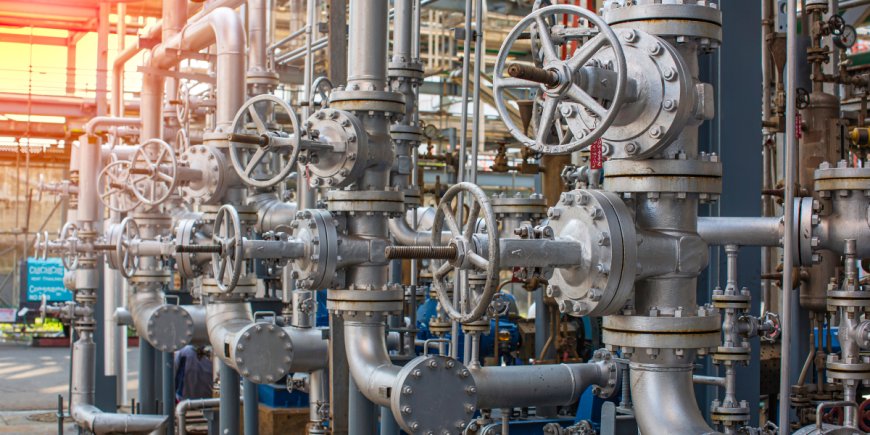Exploring Control Systems in the Oil and Gas Industry

The oil and gas industry is a complex and high-stakes environment that requires highly efficient, reliable, and secure control systems to manage operations. These systems are integral to ensuring that processes from exploration to refining, distribution, and beyond are performed safely, efficiently, and with minimal risk. Control systems in the oil and gas industry are responsible for monitoring and automating many critical processes, helping to manage everything from production rates to safety protocols. In this blog, we will explore the key technologies, functions, and innovations surrounding control systems in the oil and gas sector.
What Are Control Systems?
Control systems refer to a combination of hardware and software designed to manage and regulate various processes. In the oil and gas industry, control systems monitor everything from pressure and temperature to flow rates and chemical compositions, ensuring optimal performance of systems in challenging environments.
Control systems provide a way to automate processes, gather data, and ensure that operations remain within safe and efficient parameters. These systems are responsible for regulating actions such as opening or closing valves, adjusting pressure, or setting the temperature of reactors. The purpose of these systems is to maximize efficiency, minimize errors, and protect personnel and assets from harm.
Types of Control Systems Used in Oil and Gas:
-
Centralized Control Systems: These systems have a central unit responsible for controlling the entire process.
-
Decentralized Control Systems: These systems have multiple, independent control units that oversee different areas of the process.
-
Distributed Control Systems (DCS): A combination of both centralized and decentralized systems, DCS are used for large-scale operations.
-
SCADA (Supervisory Control and Data Acquisition): SCADA systems allow for remote monitoring and control of industrial processes, making them especially valuable in offshore operations and large, geographically dispersed sites.
Key Components of Oil and Gas Control Systems
A robust control system is made up of several critical components, each contributing to the smooth operation of oil and gas facilities.
Sensors and Actuators:
-
Sensors monitor various parameters like pressure, temperature, and flow rate. They provide real-time data to the control system.
-
Actuators are devices that physically control the system, such as opening and closing valves or adjusting pump speeds.
Programmable Logic Controllers:
PLCs are industrial computers used to control processes through real-time monitoring and automation. PLCs are responsible for executing specific control actions based on inputs from sensors, such as activating pumps or switching valves.
Distributed Control Systems:
DCS are used for process automation in large facilities. They distribute control and data processing across various components, providing redundancy and improving reliability.
Supervisory Control and Data Acquisition:
SCADA systems enable operators to monitor and control processes from a central location. These systems collect data from sensors, relay it to operators, and allow for remote adjustments, providing a crucial layer of safety and efficiency.
How Control Systems Operate in the Oil and Gas Industry
Control systems play a key role in automating and managing various operational processes in the oil and gas sector.
Automation and Monitoring of Operations:
Control systems automatically monitor and adjust operations, reducing the need for manual intervention. Automation improves efficiency and allows for real-time monitoring, which helps operators identify and address issues quickly.
Process Control and Optimization:
Process control ensures that each stage of production operates within defined parameters. From drilling and extraction to refining and distribution, control systems optimize processes, maximizing throughput and reducing waste.
Safety and Risk Management:
Control systems also ensure safety by continuously monitoring parameters and triggering alarms or shutdowns in case of hazardous conditions. In offshore platforms, for example, these systems play a pivotal role in preventing accidents by responding to high-pressure situations or abnormal gas compositions.
Applications of Control Systems in Oil and Gas
Control systems are used in nearly every aspect of the oil and gas industry, from upstream exploration to downstream refining and distribution.
Exploration and Production:
In the exploration phase, control systems monitor drilling operations, ensuring equipment operates within safe parameters. In production, they optimize extraction and processing rates while managing safety.
Refining and Processing:
In refineries, control systems ensure that processes such as distillation, cracking, and blending are optimized. They regulate temperature, pressure, and chemical composition to maximize yield and minimize energy consumption.
Storage and Distribution:
For storage and distribution, control systems manage storage tank levels, pipeline pressure, and the flow of crude oil and refined products, ensuring smooth transportation to markets.
Environmental Monitoring and Compliance:
Control systems also help monitor environmental factors such as emissions, water quality, and waste disposal, ensuring that operations remain compliant with local regulations and sustainability goals.
GE gas turbine control system
GE (General Electric) offers advanced gas turbine control systems designed to optimize the performance, reliability, and efficiency of gas turbines across a wide range of applications. These control systems are used in power plants, oil and gas industries, and other settings that rely on gas turbine technology for energy generation.
GE utilizes Mark VIe and Mark VIeS control platforms for its gas turbines, which are part of its integrated control systems. These platforms offer flexibility and scalability for both small and large turbine fleets. Mark VIe is a modular, open-architecture system that provides real-time control, monitoring, and diagnostics of gas turbines, generators, and other plant equipment. Mark VIeS is a more robust, scalable version that extends to larger plants and complex operations with multiple turbines.
GE's control systems continuously monitor the performance of the turbine, adjusting parameters such as fuel flow, air intake, turbine speed, and exhaust temperature to ensure maximum efficiency and reliability. Real-time performance data helps operators identify issues quickly and take corrective actions to avoid downtime or damage.
The control systems are capable of automatic load control, adjusting turbine output based on demand. This is particularly important for optimizing power generation and maintaining grid stability. The system can seamlessly integrate with the power grid to adjust generation capacity, ensuring that the supply matches the demand.
GE gas turbine control systems include built-in safety features to protect the turbine and associated equipment. These systems monitor key parameters (e.g., temperature, vibration, pressure) and initiate protective actions such as load reduction or shutdown to prevent damage from abnormal operating conditions. In the event of critical failures, the system can initiate emergency shutdown procedures to safeguard turbine components and avoid catastrophic failure.
GE's gas turbine control systems integrate predictive maintenance capabilities by analyzing historical performance data and trends. This helps operators identify potential maintenance issues before they lead to turbine failure, optimizing downtime and reducing repair costs. These systems often include condition-based monitoring, which allows operators to schedule maintenance tasks more efficiently and ensure optimal performance throughout the turbine's lifecycle. IS200VPWRH1A, IS210MVRAH2A are examples of GE gas turbine control system components.
Conclusion
Control systems are at the heart of oil and gas operations, playing a critical role in ensuring efficiency, safety, and environmental compliance. From drilling and refining to distribution and environmental monitoring, these systems help streamline processes and mitigate risks. As the industry continues to evolve, advancements in technology, such as AI, IoT, and predictive maintenance, will further enhance the capabilities of control systems, making them even more integral to the future of the oil and gas sector.
What's Your Reaction?
























